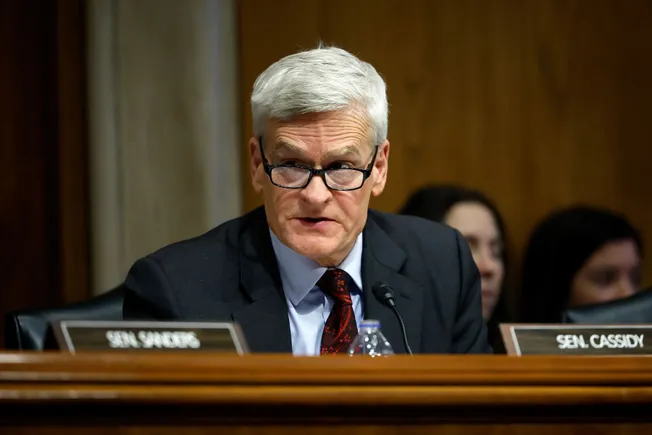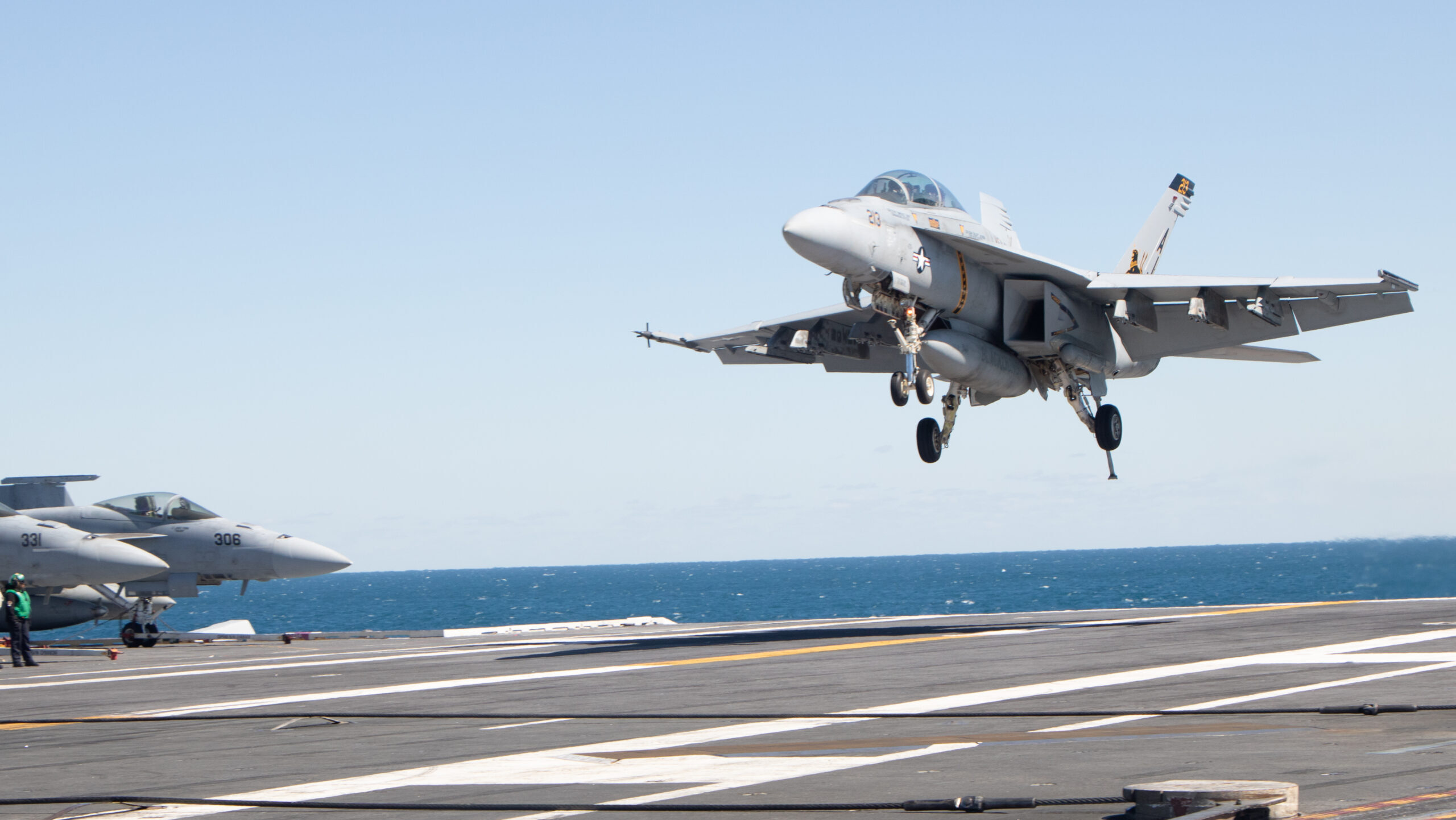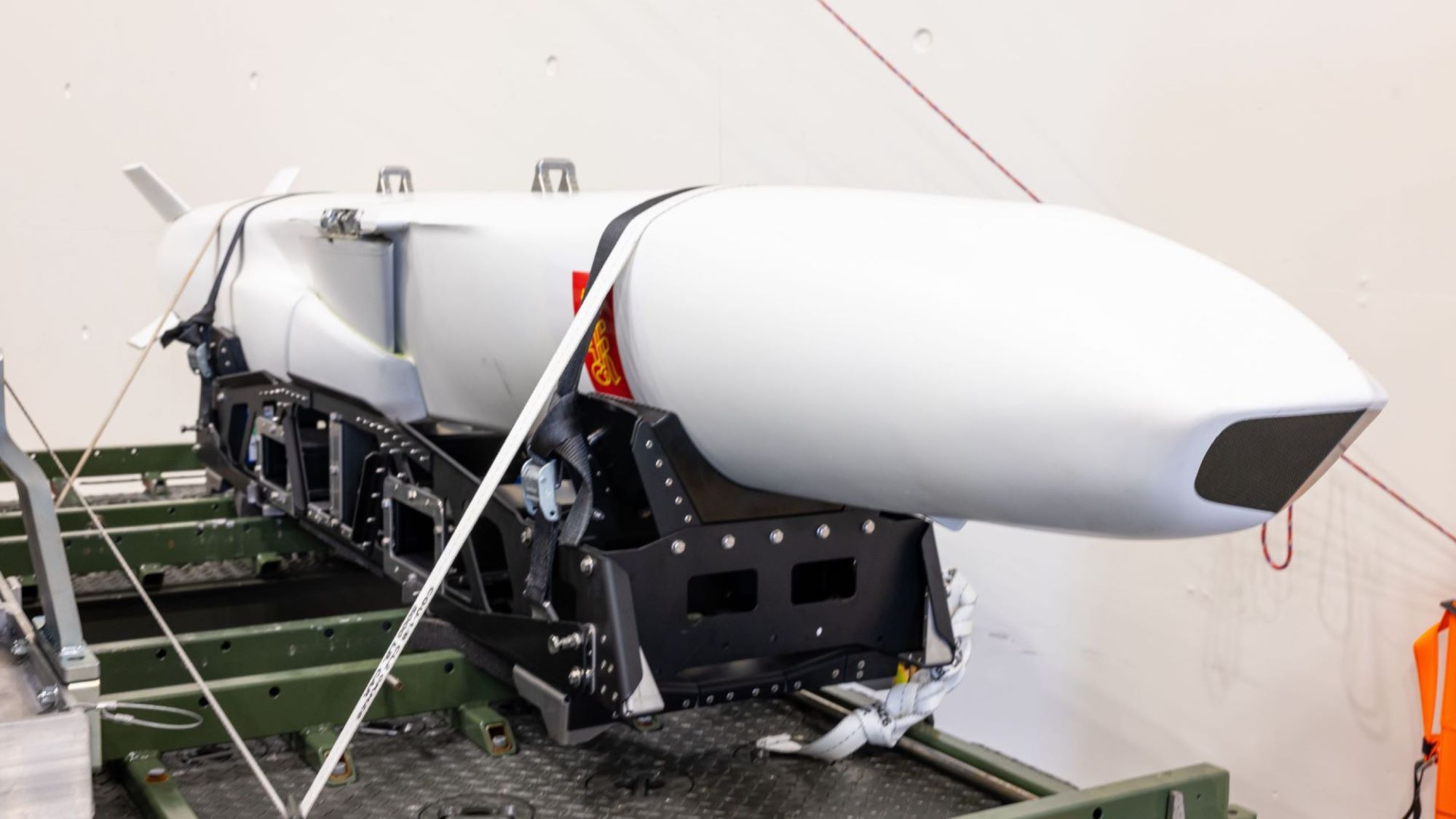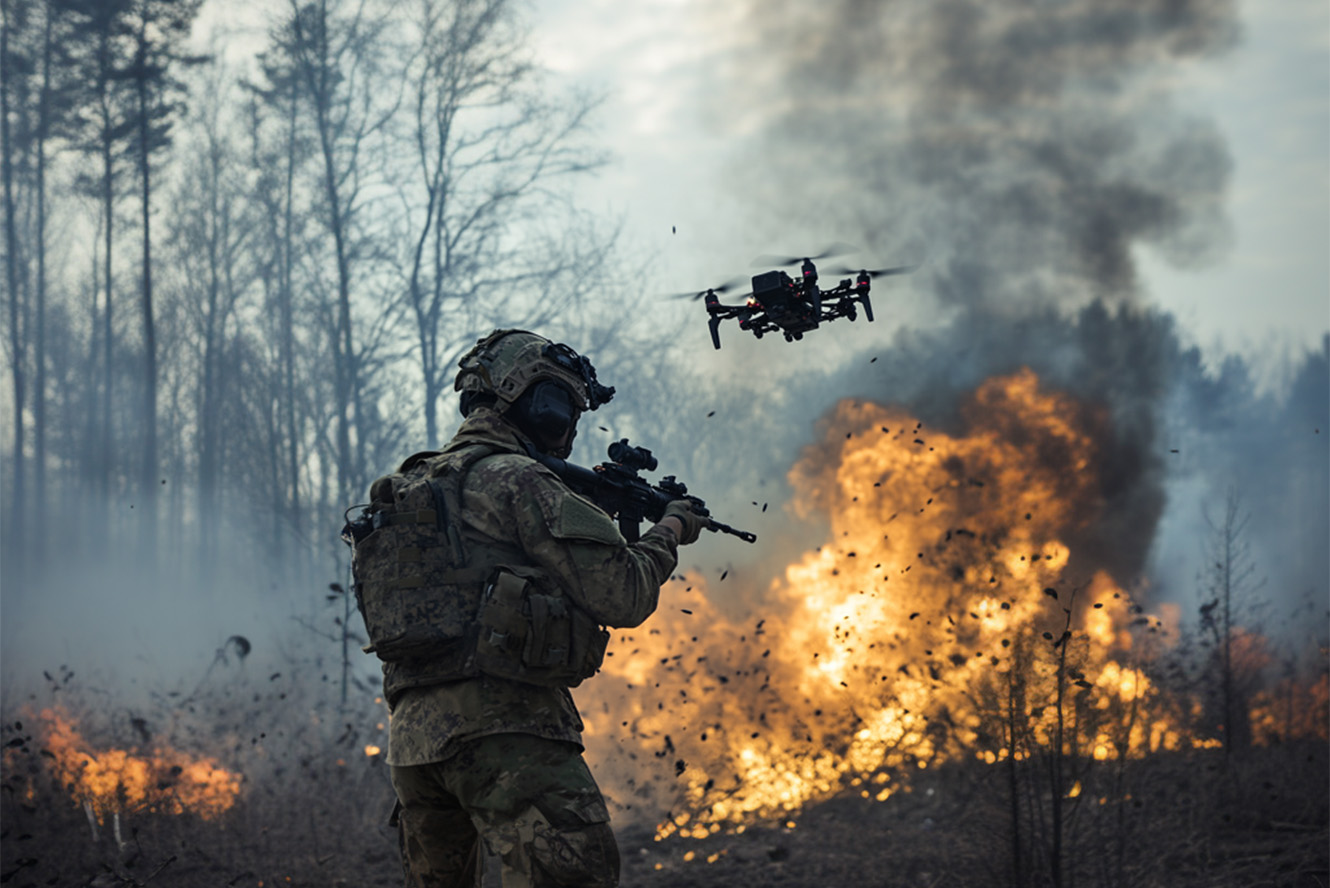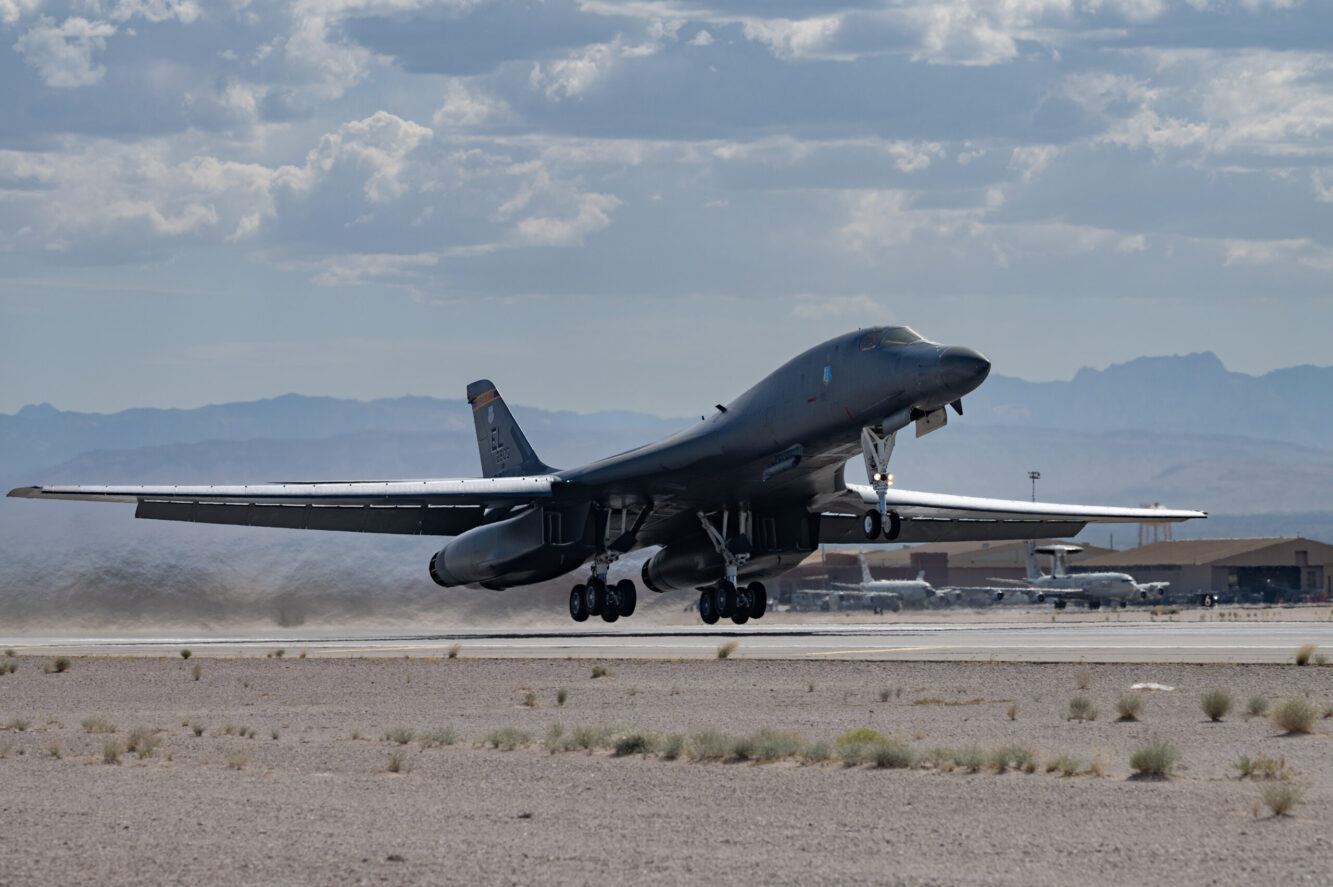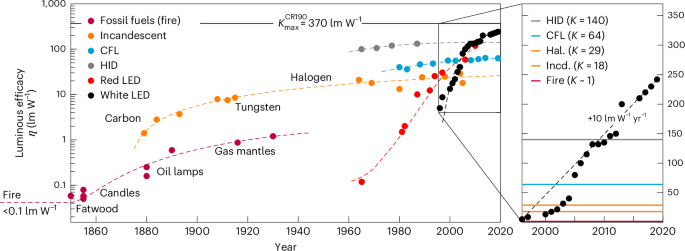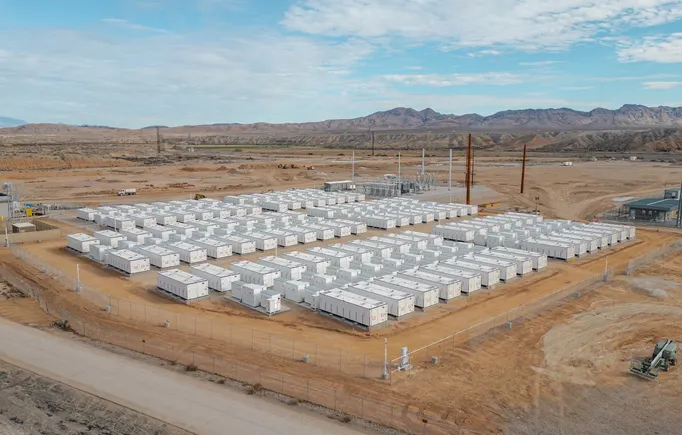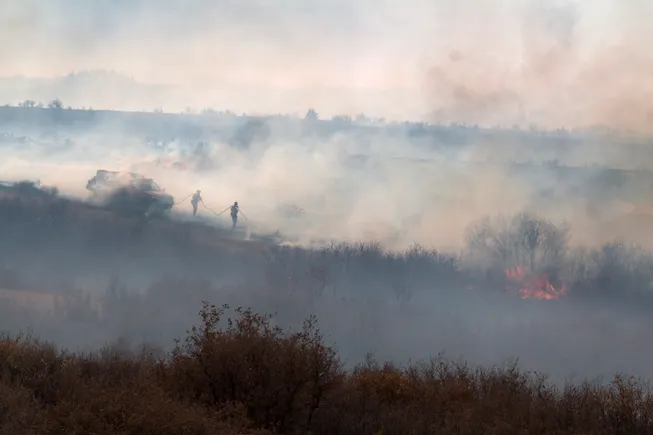Amid Syria troop reduction, will Trump repeat Middle East withdrawal mistakes?
Cameron McMillan and Bradley Bowman of the Foundation for Defense of Democracy argue in this op ed that getting out of Syria too quickly could leave the US vulnerable.


U.S. Air Force Airman, a combat control technician assigned to the Combined Special Operations Joint Task Force – Levant, watches a UH-60 Blackhawk land after clearing the landing zone in support of Combined Joint Task Force – Operation Inherent Resolve in Northeast Syria. (U.S. Army photo by Staff Sgt. Emma Scearce)
The Trump administration announced on April 18 a “consolidation of US forces in Syria,” where American troops are deployed to ensure the lasting defeat of ISIS.
While details from the Pentagon are limited, DoD’s announcement makes clear that the “consolidation” of forces to “select locations in Syria” is also a reduction of US troops to below one thousand “in the coming months.” The Pentagon disclosed in December that roughly 2,000 US troops were stationed in Syria at that time, an increase from the last publicly known troop count of roughly 900 before the wave of attacks on US forces by Iranian proxies in Iraq and Syria following the Oct. 7, 2023, Hamas terror attack on Israel.
And though the Defense Department promised to continue strikes against ISIS and keep pressure on the terror group, the reduction in forces runs counter to warnings from US military and intelligence professionals. It also risks a repeat of failings by previous American presidential administrations.
Indeed, an objective assessment of the situation in Syria makes clear an excessive or premature reduction of US forces could catalyze a costly ISIS resurgence. That, in turn, could force the US military to return to Syria later at a greater cost against a worse ISIS threat that could have been prevented, endangering US interests in the Middle East and undercutting efforts to prioritize the threat from China.
According to The New York Times, the process to reduce forces has already begun with three of the US military’s eight bases in Syria set to be closed, including Mission Support Sites Green Village and Euphrates, located in the country’s northeast. These strategically located bases near the Syrian-Iraqi border enable US forces to support local partners combatting ISIS in the Euphrates River zone.
To justify the decision, DoD pointed to the “success” that the United States has had battling the terrorist organization over the past decade, including the territorial defeat of the ISIS caliphate in 2019 and the fact that “ISIS’ appeal and operational capability regionally and globally” have been seriously degraded.
But that clashes with the recent assessments of US Central Command (CENTCOM) and the US Intelligence Community, which have warned that ISIS remains a threat. While the ISIS caliphate is indeed territorially defeated, the terrorist organization itself is not, and a premature withdrawal of US forces risks an ISIS resurgence.
In its March 2025 Worldwide Threat Assessment, the US Intelligence Community made clear that ISIS remains “the world’s largest Islamic terrorist organization” despite facing “major setbacks.” The assessment also stated that ISIS “sought to gain momentum from high-profile attacks” and pointed to several ISIS-connected terrorist attacks over the past year in the region and beyond, including the New Year’s Day attack in New Orleans, which killed 14 people and was “influenced by ISIS propaganda.”
The US military has also sounded the alarm about a potential ISIS resurgence. In July 2024, CENTCOM announced that ISIS was on pace to double its number of attacks in Iraq and Syria compared to the previous year, which CENTCOM took at the time as an indication that “ISIS is attempting to reconstitute.”
CENTCOM Commander General Erik Kurilla warned lawmakers last year that an “ISIS resurgence remains a threat” and that “ISIS would reconstitute the ability to seize territory within two years” should Iran and Russia succeed in their goal of evicting the US-led coalition from Syria and Iraq.
Kurilla has also warned about the risk of the thousands of ISIS fighters held in prison camps in Syria guarded by the US-backed Syrian Democratic Forces (SDF), which rely on support from US forces in the country. In January, CENTCOM stated that these 9,000 ISIS prisoners and the additional tens of thousands of displaced persons, many of whom have ties to ISIS, in refugee camps in Syria “risk creating the next generation of ISIS.” The Pentagon’s announcement made clear these detainees are still a concern.
To be sure, the situation in Syria has dramatically changed after the fall of the Assad regime, and the US military posture in Syria may need to be adjusted to reflect that reality. But we should not ignore these warnings and the fact that ISIS is attempting to take advantage of the current instability and uncertainty in Syria to increase its ability to conduct attacks.
This dissonance between the Trump administration’s plan in Syria and the recent warnings of US military leaders and intelligence professionals begs for congressional oversight.
Here are some questions that members of Congress and their staffs may want to ask: Do US military leaders and intelligence professionals no longer have the concerns they expressed just a few months ago, or have the concerns simply been suppressed in support of a politically motivated withdrawal?
What is the current strength of ISIS in Syria and what are the terror group’s ambitions, plans, and activities? How is the new regime in Damascus impacting these ISIS variables?
How secure are ISIS detention facilities? In what ways does the SDF still rely on the US military for support? What will be the consequences if that support is reduced or ended?
What impact could US military withdrawals have on Turkey’s military presence in Syria, and how might that hurt US interests and the SDF’s efforts to counter ISIS terrorists and keep thousands of them detained?
While periodic assessments and adjustments in force posture are prudent and necessary, especially after dramatic developments, such adjustments should be informed by the advice of military leaders and actual conditions on the ground. Withdrawals based on domestic political considerations and arbitrary timelines invite disaster and risk repeating the mistakes of past withdrawals from Iraq and Afghanistan.
In its announcement, the Trump administration asserted that its “consolidation” of US forces in Syria is a “conditions-based process.” Time will tell if that is true. If Trump repeats past mistakes by conducting timeline-based withdrawals that ignore conditions on the ground, this will not end well.
Cameron McMillan, an Iraq veteran of Operation Inherent Resolve, is a research analyst at the Foundation for Defense of Democracy’s Center on Military and Political Power, where Bradley Bowman is the senior director.









































































